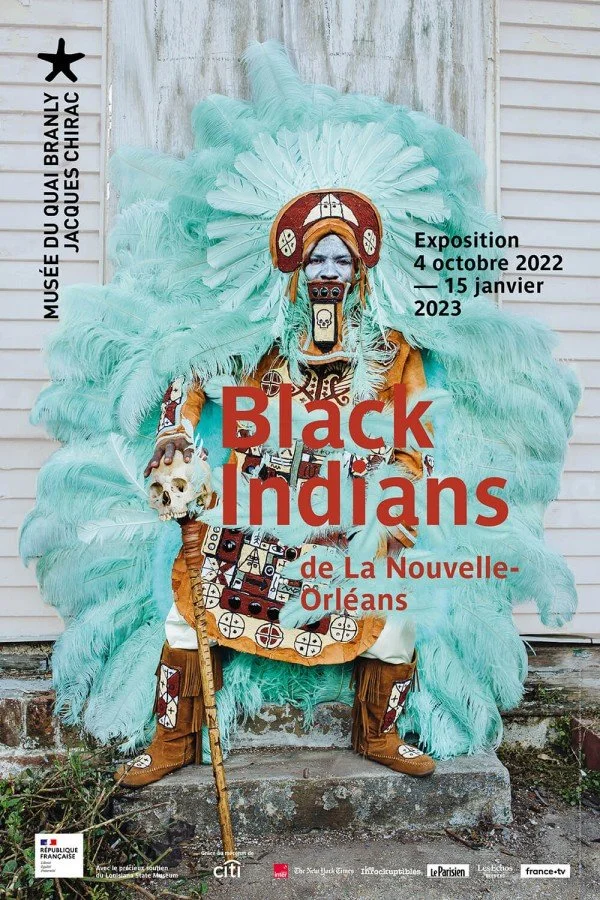
black Indians
During slavery, the only slave's day off was on Sunday. In New Orleans black people and Indians used to meet at Congo square to sing and dance together. The black Indian carnival is the heritage of those meetings. The black community still honors the Indians with costumes made with feathers and pearls, elements that are both common to traditional arts of some African and Indian tribes. This story, is the story of a cultural mix, a sort of syncretism in the very divided American society.
In 2022, I went to the Black Indians Exhibition at Quai Branly museum, in Paris, it is about Black Indians in the New Orleans Carnival of Mardi Gras. I was truly fascinated to know about this astonishing event that I have never heard about before. This carnival is very special because of its history, its costumes and its music. This article aims at sharing what I learned while visiting this very complete exhibition. In my opinion, it is a beautiful exemple in history of two communities merging to build a mixed identity so as to create a powerful culture.
From 1750, as the Catholic Church forbade farm work on Sundays, black slaves from diverse countries, multi-racial people, and Choctaw, Houma, and Chikasaw Native Americans started gathering on "Place des Nègres" (Niggers Place), later known as Congo Square. They gathered to trade, dance, play music, and discuss survival strategies. This time outside of servitude promoted a type of resilience expressed in cultural, artistic, and religious renewal, such as the creole language and Voodoo. To the sound of the drums, dances, music, and singing forged New Orleans' identity. After the Haitian revolution in 1804, enslaved Africans, free people of color, and White immigrants arrived in large numbers from the Caribbean, influencing local arts and introducing Afro-Cuban sounds and new musical instruments, such as the banza lute. The bamboula, a dance accompanied by drums, blues and jazz (from the French verb "jaser"), emerged. In this melting pot, renamed Congo Place, during the first half of the 19th century, appeared the first feather costumes, foreshadowing the Black Indians.
- Adaptation from the original text in the exhibition
Congo Square by ted Ellis
African spirituality
As fundamental elements of African-American spirituality in New Orleans, West African religions and worship practices permeate Black Indian carnival traditions. Many African-Americans observe African religious practices and express them publicly during the carnival. Some are inspired by the traditional Yoruba religion, one of the most numerous people in Nigeria. Yoruba spirits, known as orisha, have lively personalities defined by their rituals, dances, and songs. One of them, Shango, the spirit of lightning and thunder, is one of the most powerful in the Yoruba pantheon and is featured on manv costumes. The images developed by the Black Indians have roots in many other sources, including the bible and pop culture.


